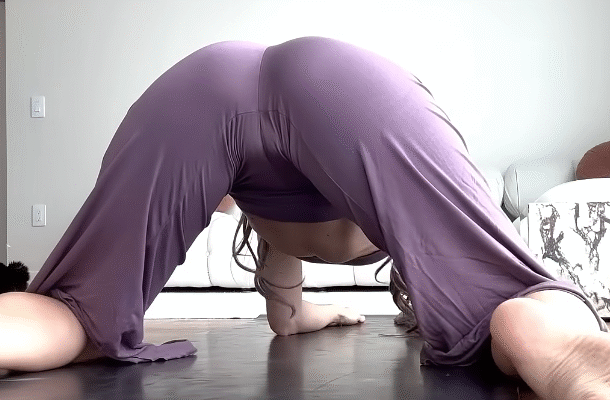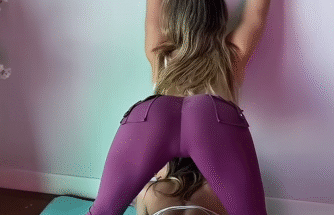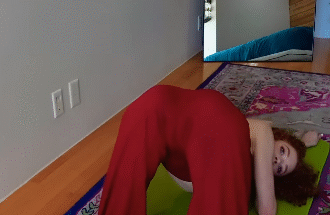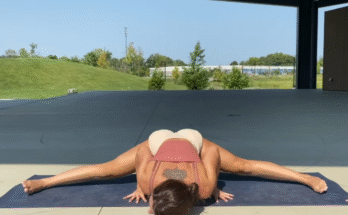The Puppy Pose—known in Sanskrit as Uttana Shishosana—is a deeply relaxing yet gently energizing yoga posture that blends the benefits of a backbend with the calmness of a forward fold. When practiced with mindful movement from a narrow-kneed to wide-kneed position, it becomes a dynamic stretch that targets multiple muscle groups, improves flexibility, and offers a soothing release for the spine, shoulders, and hips. This transition adds an extra layer of versatility to a traditional pose, making it an excellent addition to any yoga flow or flexibility-focused practice.
In this guide, we’ll explore the physical, mental, and energetic benefits of the narrow to wide kneed Puppy Pose stretch, how to practice it safely, modifications for different bodies, and how it can fit into your overall wellness routine.
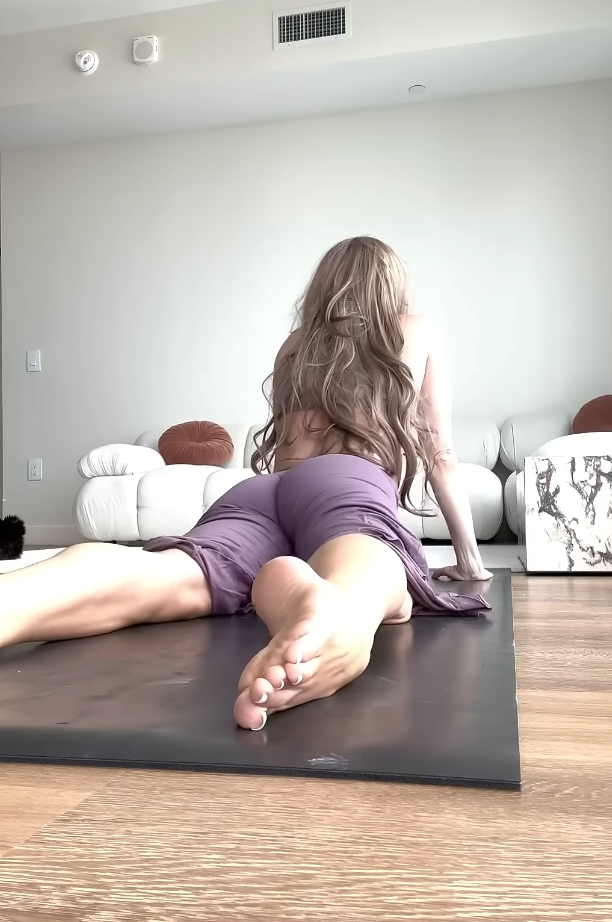

It’s especially popular in Yin Yoga and Restorative Yoga for its therapeutic qualities, though it also features in Vinyasa flows as a preparation for deeper heart-openers and backbends.
What Is the Narrow to Wide Kneed Transition?
The narrow to wide kneed Puppy Pose transition refers to beginning the pose with knees hip-width apart (narrow) and gradually widening the knees (wide) to increase the intensity and change the focus of the stretch.
- Narrow-kneed Puppy Pose emphasizes the spine and shoulders, allowing for a deeper backbend and heart opener.
- Wide-kneed Puppy Pose shifts some of the stretch into the inner thighs and groin, giving space to the hips and enhancing the sense of release through the pelvis.
By moving between the two, you invite mobility, fluidity, and exploration into the posture. This motion can help identify tight areas, promote circulation, and bring balance between stability and openness.
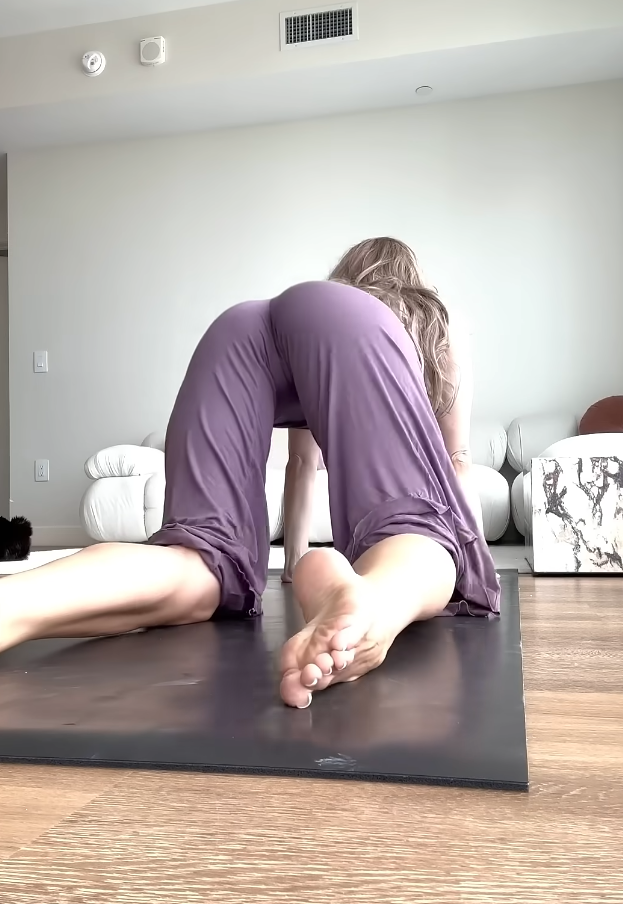
How to Practice the Narrow to Wide Kneed Puppy Pose Stretch
Here is a step-by-step guide to safely and effectively practicing this dynamic variation:
1. Start in Tabletop Position
- Come to all fours with your shoulders stacked over wrists and hips over knees.
- Ensure your spine is neutral and take a few grounding breaths.
2. Move into Narrow-Kneed Puppy Pose
- Keep your knees hip-width apart.
- Begin to walk your hands forward, lowering your chest and forehead to the mat.
- Keep your hips lifted over your knees.
- Reach your arms long, keeping elbows lifted or gently resting them down.
Optional: Lower your chin instead of your forehead for a deeper heart opener, but only if your neck is comfortable.
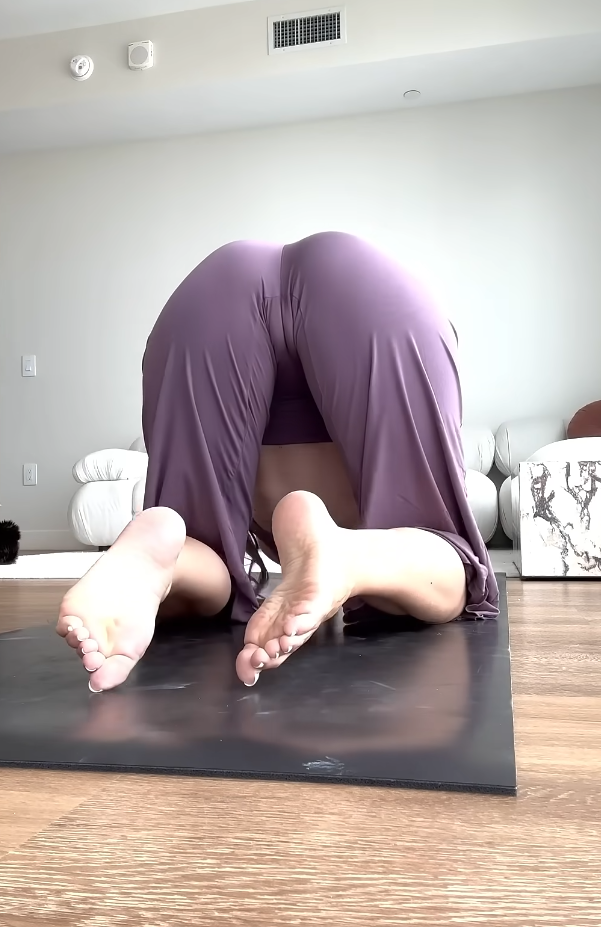
3. Breathe and Hold
- Hold the narrow-kneed position for 3–5 breaths.
- Focus on melting the chest toward the floor.
- Feel the stretch in your shoulders, arms, spine, and upper back.
4. Transition to Wide-Kneed Puppy Pose
- Slowly slide your knees wider, toward the edges of your mat.
- As your knees widen, you may notice a shift of stretch toward your inner thighs and hips.
- Keep your feet relaxed, tops of the feet pressing into the mat.
- Allow your chest to sink even lower as the pelvis gets more space.

5. Hold and Breathe
- Rest here for 5–8 breaths, softening into the ground.
- Breathe into your belly and ribs, encouraging full-body relaxation.
6. Return to Neutral
- Gently bring your knees back to a narrow position.
- Walk your hands back and return to Tabletop or move into Child’s Pose to rest.
Benefits of the Narrow to Wide Kneed Puppy Pose
This transition provides a wealth of physical and mental benefits:
1. Opens the Shoulders and Chest
Perfect for those who sit at a desk or drive for long periods, this stretch helps reverse rounded shoulders and tight chest muscles.
2. Lengthens the Spine
Both the narrow and wide variations decompress the spine, allowing more space between the vertebrae and reducing back tension.
3. Improves Hip Flexibility
The wide-kneed position gently opens the hips and inner thighs, increasing mobility and reducing lower body tension.
4. Calms the Nervous System
Like other forward folds, Puppy Pose soothes the mind, encouraging parasympathetic nervous system activity (rest and digest mode).
5. Builds Body Awareness
The dynamic motion between narrow and wide helps you tune into the sensations in different areas of your body, building proprioception.
Modifications and Props
No two bodies are the same, so use props and variations to make this stretch work for you:
- For Sensitive Knees: Place a folded blanket or towel under the knees.
- For Limited Shoulder Flexibility: Use yoga blocks under the hands or rest your chest on a bolster.
- To Support the Head: Use a block or pillow to support the forehead or chin, easing pressure on the neck.
Who Should Practice This Pose?
This stretch is beneficial for:
- Beginners and experienced yogis alike
- People with tight shoulders, spine, or hips
- Those recovering from stress or seeking grounding postures
- Athletes and desk workers who need to counteract forward posture
Caution: If you have recent shoulder, knee, or hip injuries, or hypermobility, consult a professional before practicing. Always move gently and listen to your body.
When to Practice
You can include this stretch:
- In your warm-up: As a gentle opener before deeper backbends or hip poses.
- As part of a Yin or Restorative sequence: For long holds to promote release.
- Before bed: To calm your body and ease into relaxation.
- During breaks: As a short mid-day reset for your spine and shoulders.
Final Thoughts
The narrow to wide kneed Puppy Pose yoga stretch offers more than just physical benefits—it’s a moving meditation that invites you to slow down, explore sensation, and deepen your relationship with your body. This simple yet powerful posture can serve as a daily reminder to open your heart, release tension, and make space for breath and presence.
Whether you’re a seasoned yogi or a beginner seeking mobility and mindfulness, this pose can become a staple in your practice. By adding movement from narrow to wide, you introduce a dynamic flow that enhances flexibility, balance, and a deep sense of inner calm.
So roll out your mat, stretch like a puppy, and enjoy the journey from narrow to wide—one breath at a time.
